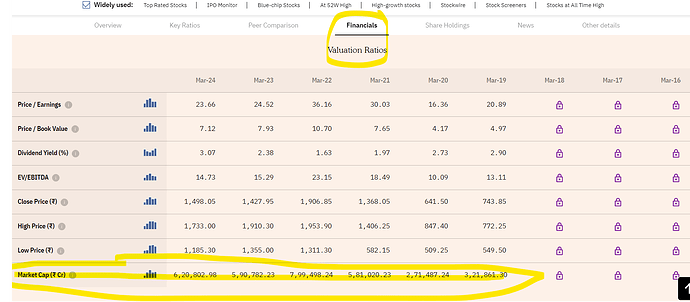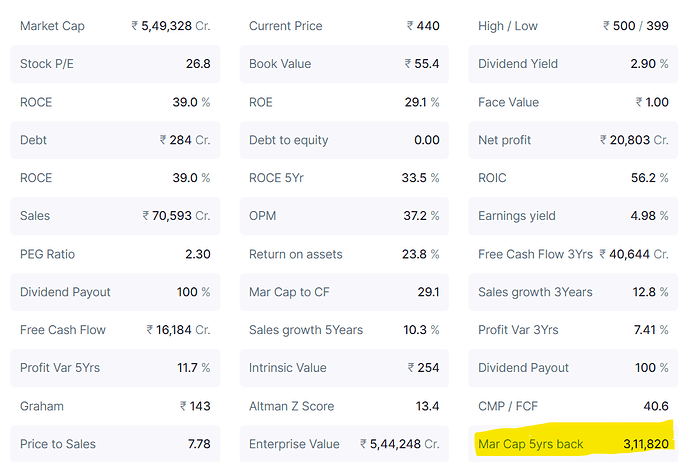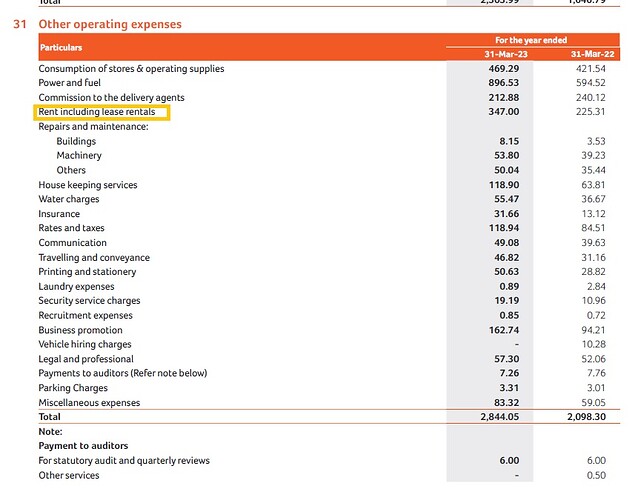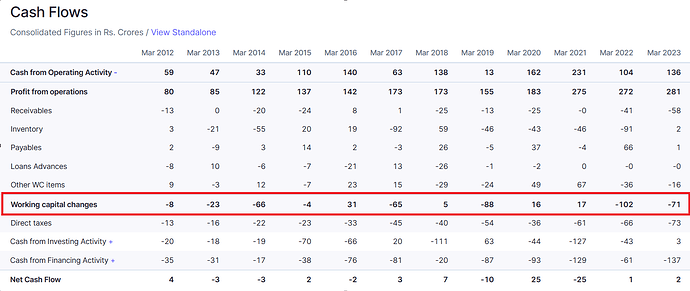Refer Value Research online website (www.valueresearchonline.com) for Historic market Cap, values at the end of march.
For Infosys sample:
Does large holding of FII and DII make share ill liquid. Will I be able to generate profit with high FII and DII holding
Hi Girish,
I am wondering, if you’re able to find an explanation for this? I am also confused by this.
Could it be the reason that company is deducting lease expenses two time? As per Ind AS-116 the lease expenses should be treated as finance cost.
@Girish_Kolari @mohit_sharma IndAS 116 is only for long term lease. Short term lease get expensed out in P&L
If FIIs and DIIs hold large qty then in my personal opinion this is a positive as the number of shares available will be less and if the company does well then there will be demand for shares will be more and share price can raise easily.
@lohiyaakshay08 @Girish_Kolari Thank you for replying. This clarifies it little bit, but still the confusion remains as the short-term leases are around 60% of long-term leases, and 4% of total operating expenses. As far as I know Barbeque-nation business model mostly require long-term leases.
Can you please throw some more light on this?
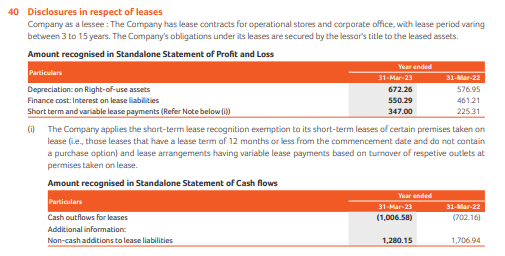
You are comparing short term lease with interest on long term lease, which is not comparable.
In my view, rent for long term lease is ~1006 cr (see above pic)
Hi, I have noticed that a company has CFO/PAT at 75% over 10 years. What could be potential reasons for same?
What should be ideal CFO/PAT?
Hi,
Mostly the reason will be funds locked up in working capital. This is normal, though ideally lower the better. You can sum up investment in working capital and compare it with the difference between cumulative PAT and cumulative CFO. In case of Dhanuka, it explains almost the entire difference. Check for yourself.
I have question on tax. If I give money to my wife and invest that into buybacks and SGB, will it be tax free? I know PPF is tax free
There are some massive asset management companies in the world such as blackrock and Vangaurd. Do you think that india is also going to have such a bigger companies in the future? Looking at the current scenario, too much money is being managed by all mutual fund companies.if each mutual fund company buys 10% of the stock, then totally 10 mf companies can whole company.
Hi, I have a doubt about MAX HEALTHCARE, India’s second-largest hospital chain. I’ve analyzed it thoroughly and there is nothing wrong in it. It is a great company with good fundamentals and the industry is also growing. The point of concern is the valuations. I am a newbie and I don’t know the exact way to arrive at the intrinsic value. Can anyone share a reliable method to calculate the intrinsic value of any company?
Also what should be the Fair value of MAX HEALTHCARE?
Hello,
I am tracking a company named Ducon Infra & today there was an announcement that the pledged shares were invoked by the lender on 6-May-2024.
So, does it mean that lender had already sold those shares in the open market & is now officially informing or will he start selling?
Do clarify on this point pls
There are various scenarios exist not one exact can be derived unless you give the whole picture, this stays good in all stock analysis, although I try to give you the possible 4 reasons
- Aggressive accounting practices: The company might be managing its earnings through aggressive accounting methods, which inflate CFO relative to PAT.
- High depreciation or amortization: If the company has significant non-cash expenses like depreciation or amortization, it could lead to a higher CFO/PAT ratio.
- Tax management: Effective tax planning strategies could also influence the CFO/PAT ratio by reducing the tax impact on profits.
- Capital structure: If the company has substantial non-operating income or expenses, such as interest income or expenses from investments or financing activities, it could affect the ratio.
The ideal CFO/PAT ratio varies across industries and depends on factors like capital intensity, growth prospects, and business models. Generally, a higher ratio suggests better cash flow conversion from profits, but a sustainable and stable ratio is often preferred over extremes. For instance, a ratio between 0.6 and 0.8 is often considered healthy, but it’s essential to compare it with industry benchmarks and historical performance for a meaningful analysis.
Hello,
I have a single equity mutual fund in my portfolio (PPFAS Flexi cap). I’ve been trying to find another equity mutual fund (just for the mental satisfaction of not having all money in a single fund.)
Can you suggest one or at the most 2 equity mutual funds along with the reasons for selecting them.
In case you are unable to make suggestions on particular fund(s), it would be great if you can guide me to a resource that tells the most important factors to consider while choosing an equity mutual fund (preferably in the Indian context).
Thanks for your time!
I have two - PPFAS, Quant - Both flexi.
PPFAS - My reasons - skin in the game, crystal clear investment philosophy and discipline. Safety.
Quant because - diversification, in terms of style or method of investment.
Flexi caps, because, if you are giving your money to someone else to manage, why handicap them further with sectoral, cap or other constraints. Let them be free.
I would suggest to go with one of growth oriented flexi mutual funds(DSP, PGIM, AXIS). I personally would prefer DSP flexi cap.
Growth oriented has high PE stock which is opposite to PPFAS’s value based investing.
Both the investing styles has different market cycle

